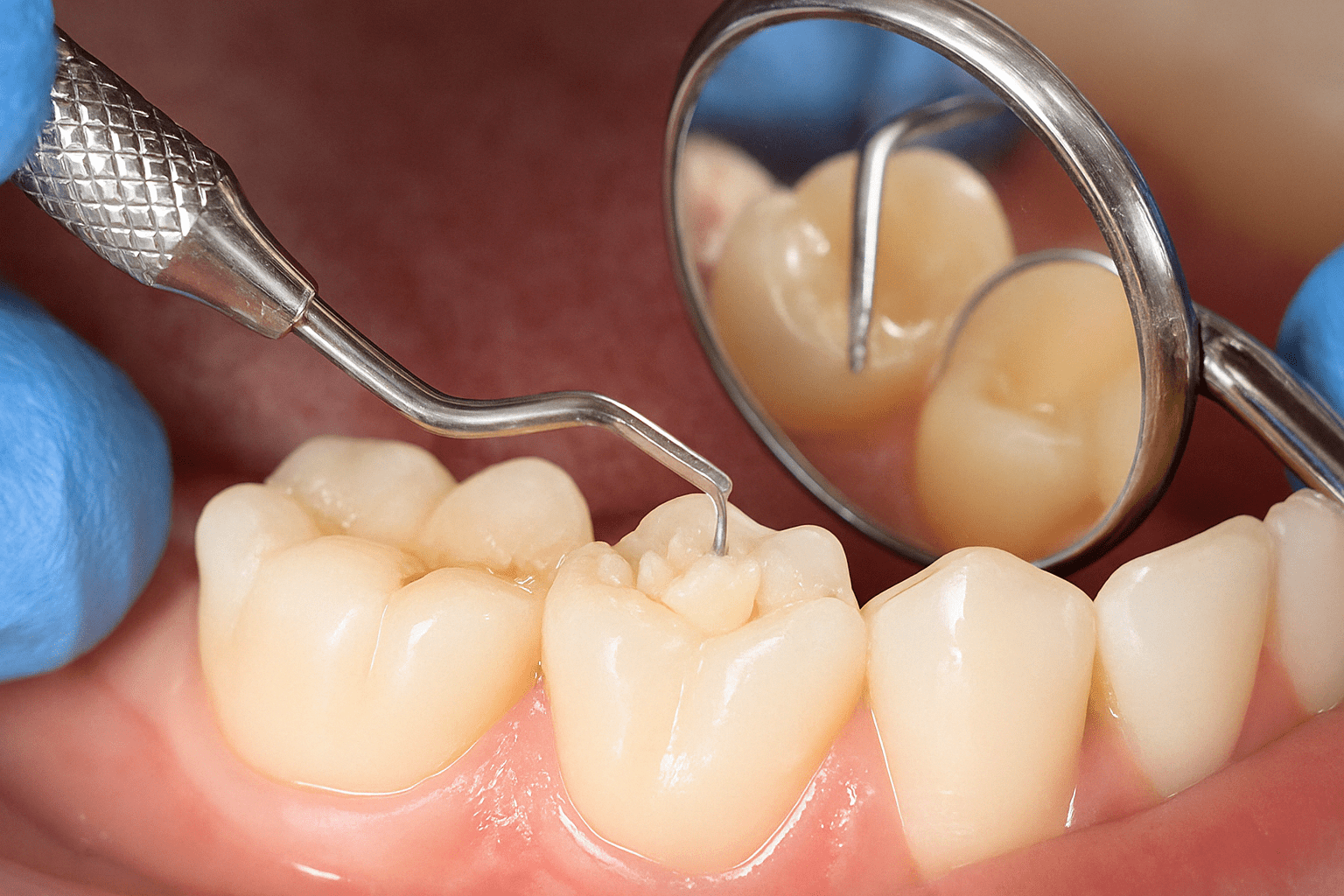Table of Contents
ToggleEverything You Wanted to Know About Fillings (But Were Too Afraid to Ask)
Why Are Fillings Needed?
- Tooth sensitivity to hot, cold, or sweet food
- A visible hole or dark spot on a tooth
- Sharp pain when biting
- Food getting stuck in one particular spot
- A tooth that feels rough or chipped
What Are Fillings Made From?
1. Composite Resin (Tooth-Coloured Fillings)
There are various materials used for fillings. The choice depends on cavity location, damage
extent, and your preferences:
- Pros: Matches your natural tooth shade, bonds well, requires less drilling
- Cons: May not last as long in large back molars, slightly more expensive
- Lifespan: 5–10 years
2. Amalgam (Silver Fillings)
Made from a mix of metals including mercury, silver, tin, and copper, amalgam fillings are known for their strength and longevity.
- Pros: Very durable, affordable, resistant to wear
- Cons: Noticeable silver colour, more tooth removal required
- Lifespan: 10–15 years
3. Glass Ionomer
These are used mostly in baby teeth or small fillings. They release fluoride, which helps protect the tooth from further decay.
- Pros: Releases fluoride, good for children, easy to place
- Cons: Less durable, doesn’t match tooth as well
- Lifespan: Around 5 years
4. Gold or Ceramic (Porcelain) Fillings
Used more in crowns or inlays, and are usually reserved for more complex restorations.
- Pros: Strong and long-lasting
- Cons: Expensive
- Lifespan: Gold 15+ years, Ceramic 10–15 years
What’s the Process of Getting a Filling?
Are Fillings Safe?
Let’s Catch It Early

Dr Reem Ali is the Head Dentist at Hadfield Family Dental, having practised for more than two decades as a qualified general dentist. Dr Ali possesses an immense passion for all things dentistry. Over the past 14 years, Dr Ali and her team have served the local Hadfield community by providing comprehensive dental care to patients of all age groups, driven by the steadfast belief that everyone deserves to have a healthy and beautiful smile. Dr Ali has a special interest in the field of Invisalign (clear teeth straighteners) and keeps tabs on advancements made in this area of dentistry.

